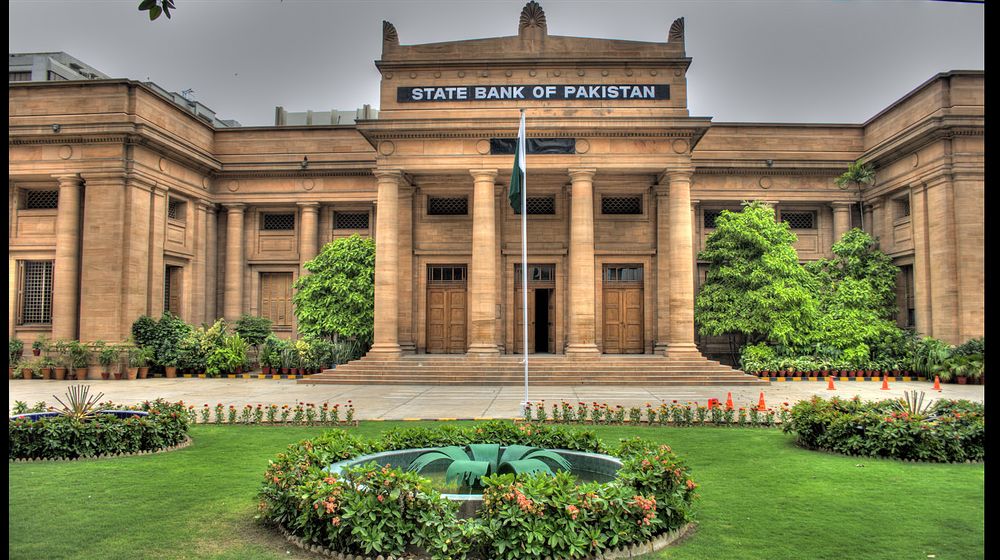The Monetary Policy Committee (MPC) has reduced the policy rate by 100 basis points to 8 percent.
This decision reflected the MPC’s view that the inflation outlook has improved further in light of the recent cut in domestic fuel prices. As a result, inflation could fall closer to the lower end of the previously announced ranges of 11-12 percent this fiscal year and 7-9 percent next fiscal year.
The overall policy rate has been reduced by 5.45 percent from 13.25 percent, which is a significant cut in such a short span of time.
Globally, the key rate has been slashed by the central banks in various countries after the economic slowdown following the impact of COVID-19. Pakistan is among the countries which significantly reduced the policy rate in terms of basis points though it remains at a higher level compared with other countries.
The MPC highlighted that the coronavirus pandemic has created unique challenges for the monetary policy due to its non-economic origin and the temporary disruption of economic activity required to combat it. While easier monetary policy can neither affect the rate of infection nor prevent the near-term fall in economic activity due to lockdowns, it can provide liquidity support to households and businesses to help them through the ensuing temporary phase of economic disruption.
In particular, the successive policy rate cuts and sizeable cheap loans provided through the SBP’s enhanced refinancing facilities have helped maintain credit flows, bolster the cash flow of borrowers, and support asset prices. This has contained the tightening of financial conditions that would otherwise have amplified the initial necessary contraction in activity.
In reaching its decision, the MPC considered key trends and prospects in the real, external and fiscal sectors, and the resulting outlook for monetary conditions and inflation.
The MPC noted three key developments since the last MPC meeting on 16th April, 2020. First, the government has significantly reduced petrol and diesel prices by 30-40 percent in response to the continued fall in global oil prices, which has improved the outlook for inflation. Second, most countries, including Pakistan, have begun easing lockdowns, which should help provide support to economic activity.
Recent supportive developments have helped to restore the SBP’s foreign reserves position to close to pre-coronavirus levels of over US$ 12 billion.
Real Sector
Economic data has been consistent with the expected sudden and sharp drop in activity. LSM witnessed a steep decline of 23 percent (year on year) in March, due to the withdrawal from economic and social activity aimed at slowing the spread of the virus. High-frequency indicators of demand such as credit card spending, cement dispatches, credit off-take and POL sales also suggest a marked contraction in domestic economic activity in both March and April.
At the same time, after showing signs of recovery earlier in the year, both consumer and business sentiment has fallen sharply.
More recently, the government has initiated a phased lifting of restrictions for different economic sectors conditional on the future course of the pandemic. If this easing proceeds smoothly, activity should pick up in the coming months. The MPC noted that, in light of preliminary evidence from China and other countries that eased lockdowns earlier than others, activity in service sectors and consumption, which form a large part of the domestic economy, could remain subdued for longer.
External Sector
The current account deficit has continued to narrow, even though both exports and imports have fallen sharply since the coronavirus outbreak. Exports declined by 10.8 percent (year on year) in March. Imports, after indicating some recovery in recent months, contracted by 19.3 percent (year on year). The April figures from the Pakistan Bureau of Statistics reveal an even steeper decline in both exports (54 percent) and imports (32 percent). While remittances have so far remained resilient, there are potential downside risks given the economic difficulties across the world, especially in oil-exporting countries.
Despite challenging global conditions, the outlook for the external sector broadly remains stable. The current account deficit should remain bounded and the recent fall in portfolio inflows will be offset by official flows committed by the international community, such that Pakistan’s external position remains fully funded. Together, these developments, buttressed by the flexible exchange rate regime, should continue to support a steady build-up in the SBP’s foreign exchange reserve buffers.
Fiscal Sector
Like the external sector, the fiscal sector was also on the track of much-needed consolidation before the coronavirus outbreak. The primary balance recorded a surplus of 0.4 percent of GDP in Jul-Mar FY20 against a deficit of 1.2 percent in the same period of FY19, the first 9-month surplus since FY16. However, the substantial fall in economic activity since March has significantly affected tax revenues.
Monetary and Inflation Outlook
The inflation outlook is subject to two-sided risks. Inflation could fall further than expected if economic activity fails to pick up as expected next fiscal year. On the other hand, there are some upside risks from potential food-price shocks associated with adverse agricultural conditions. Price pressures could also emerge if the economy gains greater momentum in the second half of FY21.
Overall, the MPC felt that with today’s rate cut and based on available information, the monetary policy stance should support the economy over the coming months, while ensuring price and financial stability. In line with its previous communications, the MPC has remained data-driven and forward-looking in its interest rate decisions and stands ready to take appropriate actions as the need may arise.





















